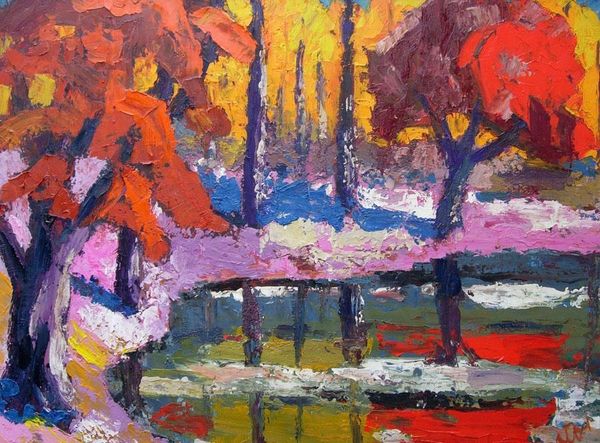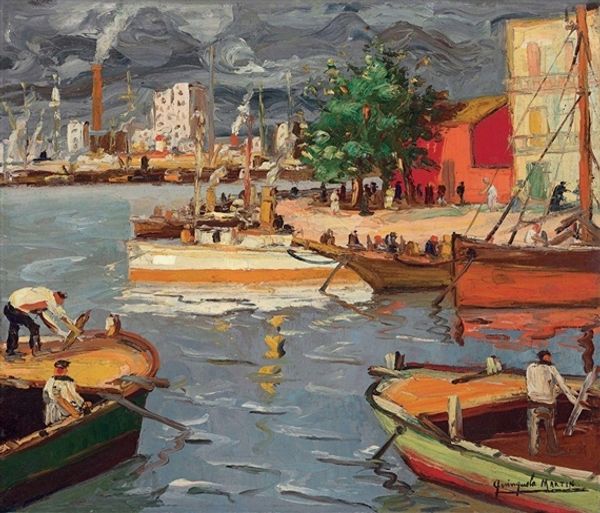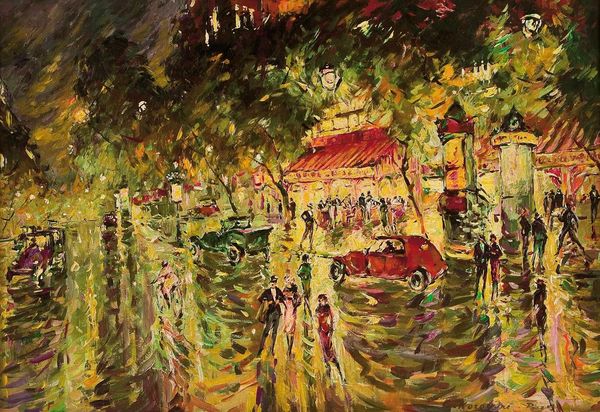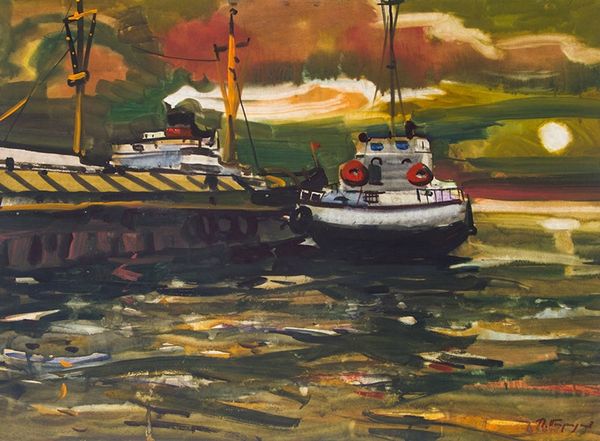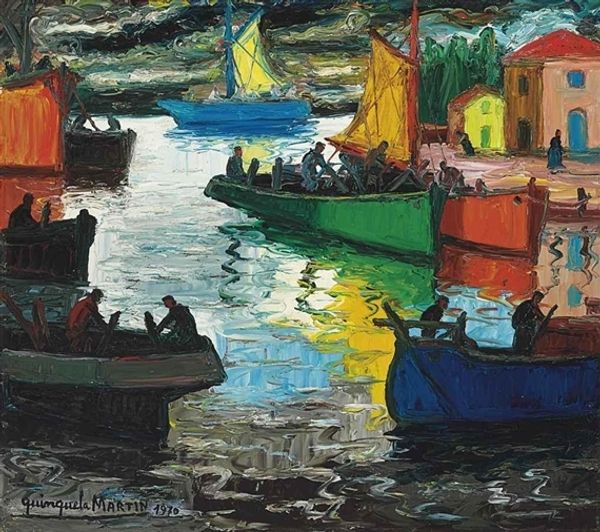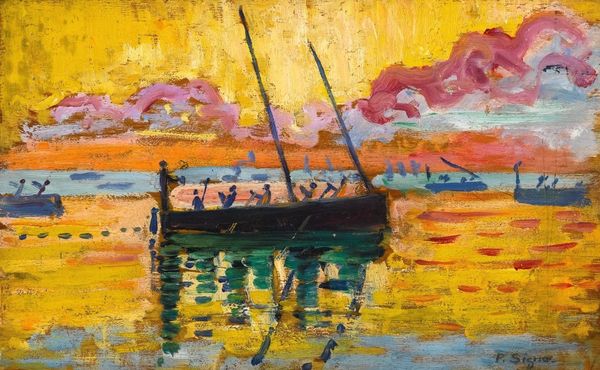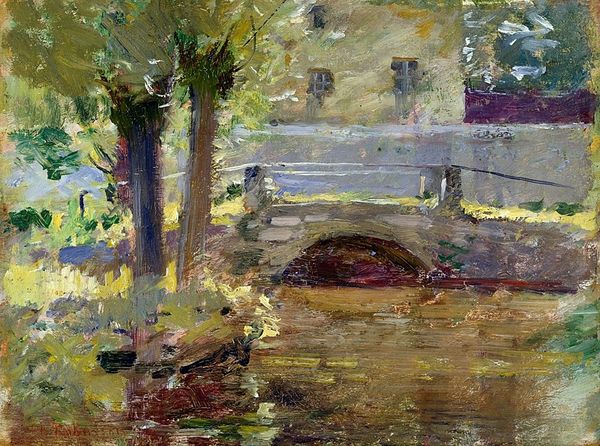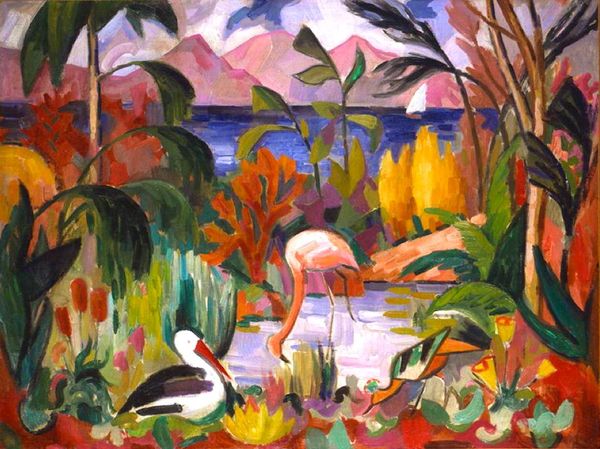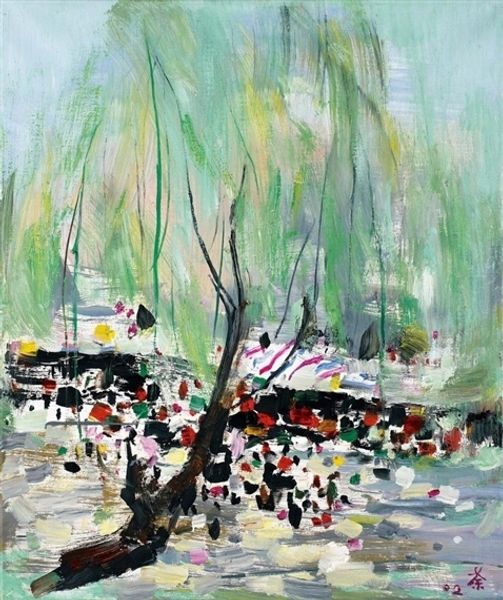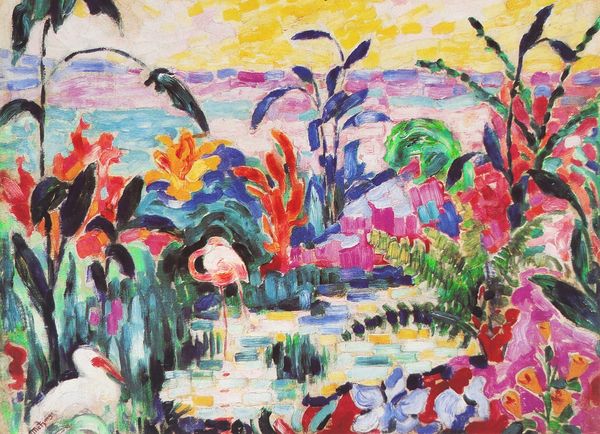
Copyright: Carlos Almaraz,Fair Use
Curator: Carlos Almaraz’s 1989 painting, "Echo Park Bridge at Night," is a vibrant acrylic on canvas, notable for its impasto technique and expressionistic style. What strikes you immediately about this piece? Editor: The materiality practically jumps out—the thick, almost sculptural paint application lends the scene a tangible, raw energy. It’s as if the artist physically wrestled the light from the urban landscape. Curator: The painting's composition undeniably contributes to that raw energy. See how the rhythmic verticals of the palm trees counterpoint the horizontality of the bridge? It creates a dynamic tension, pushing the eye back and forth. And consider Almaraz’s use of color. He amplifies reality—the trees are fiery red rather than a natural green, reflecting an emotionally charged vision. Editor: Indeed. I am drawn to how he builds this nightscape with palpable strokes of acrylic—visible labor is embedded in its textures, mimicking the rough conditions experienced by migrant communities. I read that Almaraz himself had intimate relationships with labor movements through ASCO in the '70s, deeply imbuing his work with socio-political undertones. Curator: Almaraz does push boundaries. The seemingly simple scene is pregnant with dichotomies. There is darkness and illumination, nature, and city. One can decipher a sense of longing here, perhaps echoing his feelings for Los Angeles or the state of California itself, a site rife with its own complexities. Editor: True, these textures are like a material index of city grit; each dab tells its story about community, place, and work conditions; these formal gestures simultaneously reveal more. Curator: Considering this landscape and those details, one could analyze the painting for hours. Thank you for giving me another set of valuable perspectives regarding Almaraz's intention and social concerns within “Echo Park Bridge at Night.” Editor: Likewise; Almaraz offers rich opportunities for analysis. Its evocative impasto technique allows one to see both raw materials and poignant reflections of its socio-cultural history.
Comments
No comments
Be the first to comment and join the conversation on the ultimate creative platform.
